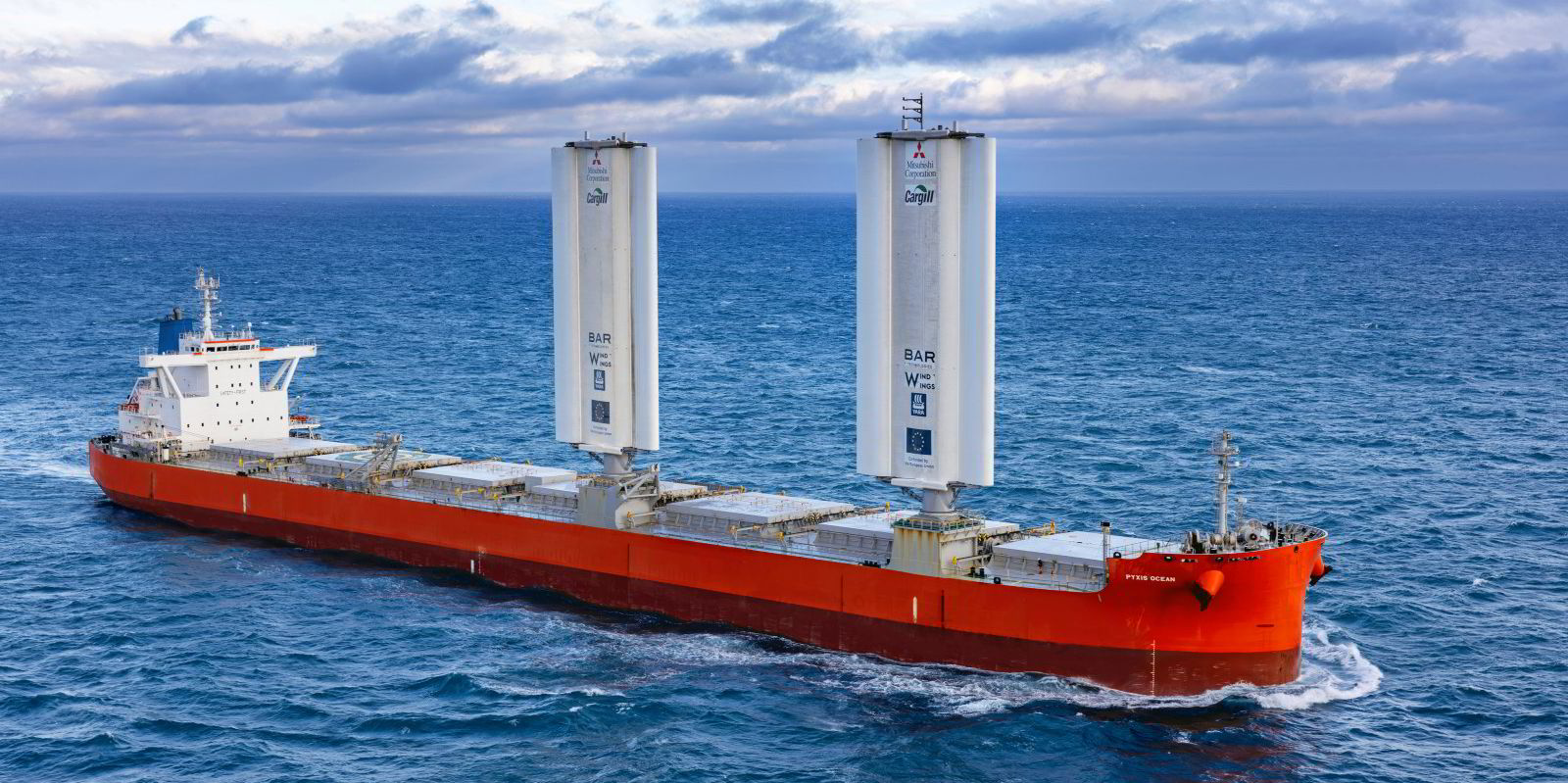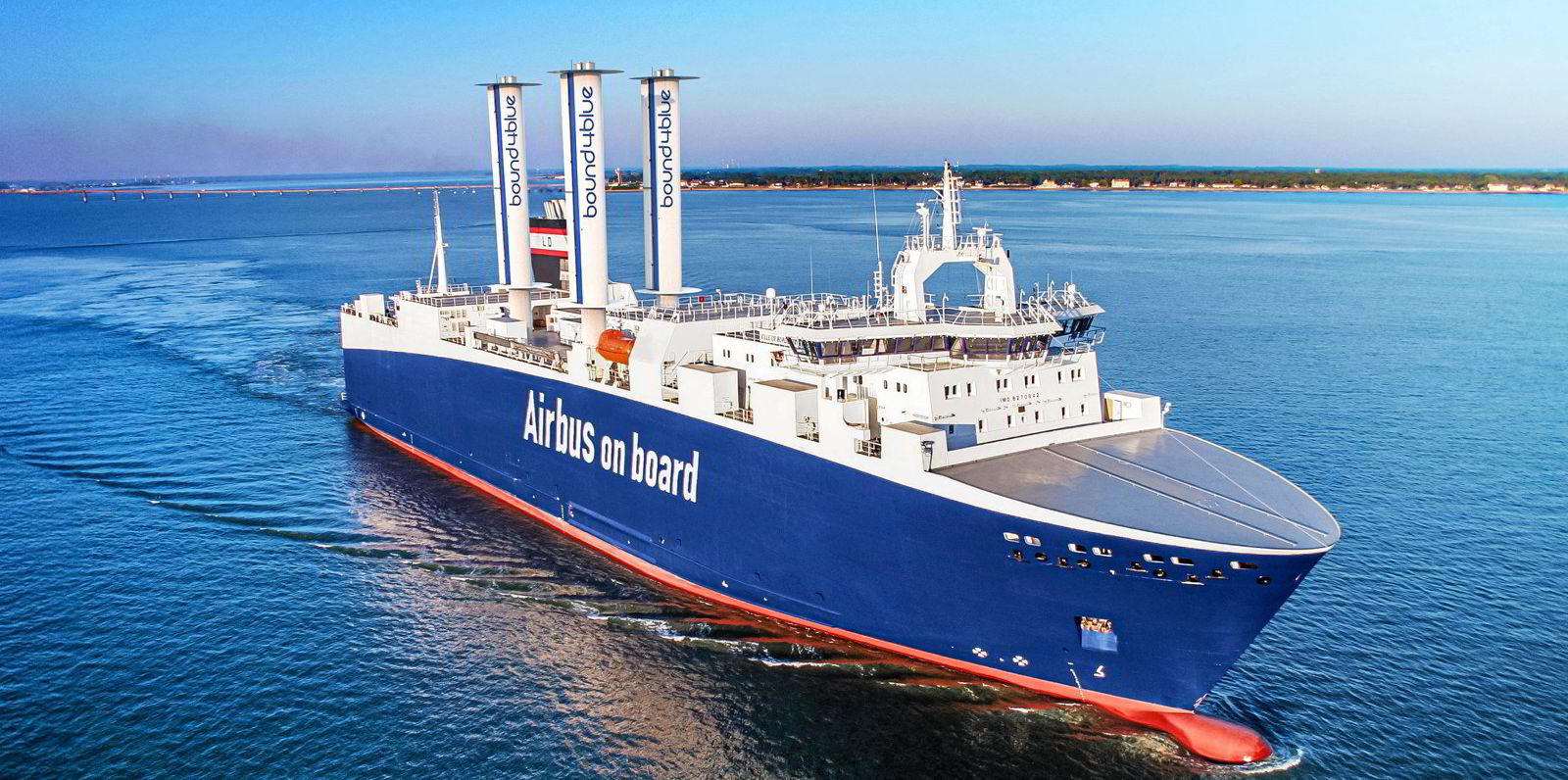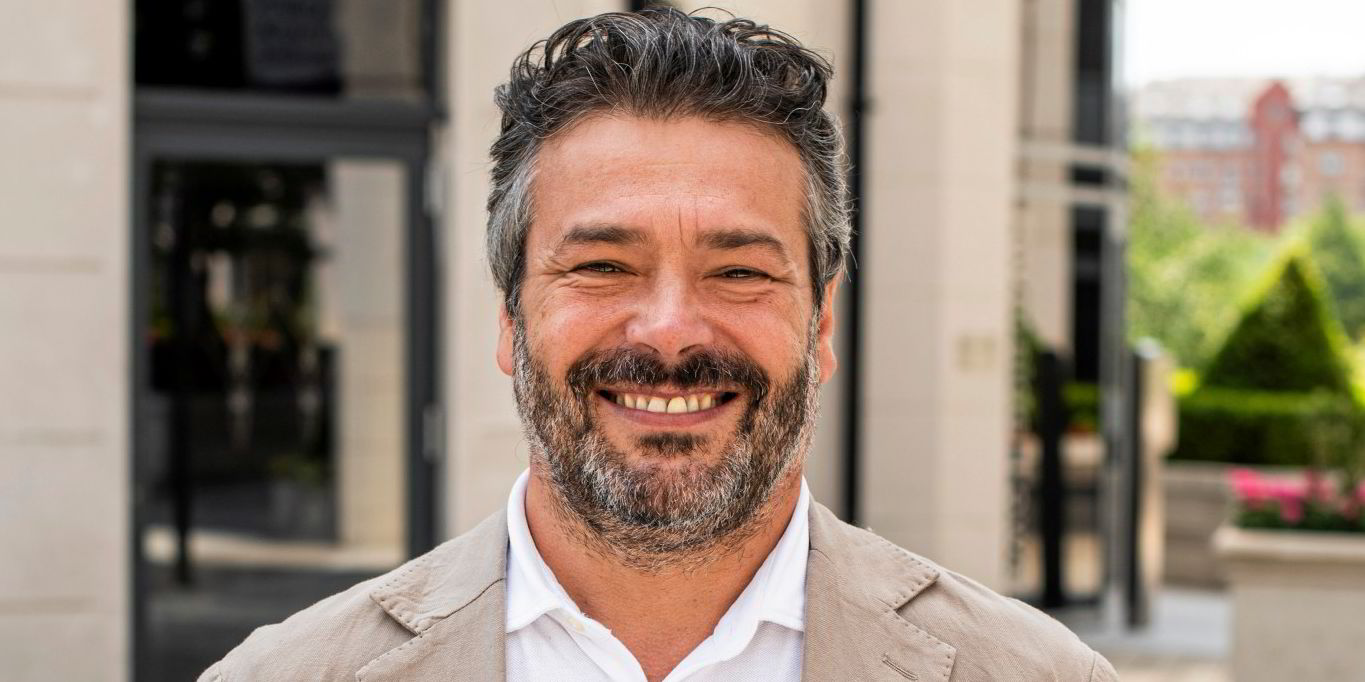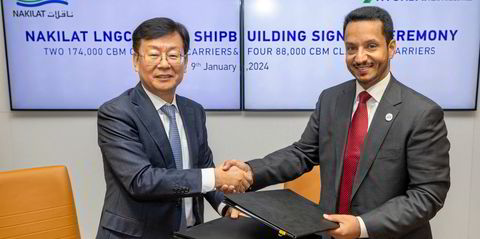Cargill has achieved big fuel savings from its first long-term trial of wind power on a bulker trading between South America and Europe.
Yet despite savings being close to theoretical estimates, the giant commodities trader said the economics of the technology remained stretched with fossil fuels at current prices.
Successes of the first six months of trading of the retrofitted 80,962-dwt kamsarmax bulk carrier Pyxis Ocean (built 2017) included the safe operation of the hard sails, interest from charterers and good access to most ports, Cargill said.
Cargill Ocean Transportation president Jan Dieleman told TradeWinds: “Overall we’ve been very pleased with the results … We are very confident that wind has a role to play going forward.”
Last year, the Mitsubishi Corp subsidiary MC Shipping-owned vessel was fitted with two BAR Technologies solid WindWings which generated power to save on average three tonnes of fuel per day, or 14%, which was close to the modelled 15%.
Key to the efficiency of the system is the ease of use to encourage the crew to deploy the sail, Dieleman said.
On the first voyage leg the sail was in use a limited time as the crew accustomed themselves, the second leg its was used 60% to 65% of the time, and on the final over 80%. “That’s much higher than I would have expected,” Dieleman said.
The vessel has been in Amsterdam this week after sailing from Paranagua in Brazil via Marin in Spain. Since October, it has also visited the Canary Islands, Gdynia, Gothenburg, Puerto Drummond in Colombia and Huasco in Chile.
The master and crew have a simple red, orange and green traffic light guide system for use, with green indicating deploy, red take down, and orange use at discretion.
“They have simplified that which is really good. On the one leg to Brazil when it was orange the crew actually went for it and they were able to outpace a storm, so the crew was quite happy.”
BAR Technologies chief executive John Cooper said: “The results of the Pyxis Ocean’s first voyage with WindWings installed clearly demonstrate that wind-assisted propulsion can secure significant fuel savings and emissions reduction.
“For example, in near optimum sailing conditions, during an open sea voyage, the Pyxis Ocean achieved fuel savings of 11 tonnes per day. And while the Pyxis Ocean has two WindWings, we anticipate the majority of kamsarmax vessels will carry three wings, further increasing the fuel savings and emissions reductions by a factor of 1.5.”
Cargill has the vessel on a five-year time charter and provided most of the funding for the deal, with support from Mitsubishi and the European Union.
The cost of the system and installation has not been disclosed. Cargill said it was likely to take the ship on a second five-year charter in due course.
“The problem is today on [sail] retrofits, the economics are not really there,” Dieleman said. “That is the problem. You can argue the capex is too expensive or you can say that the fuel savings are too low.”
This will change when more expensive no and low-carbon fuels come on stream and emissions rules are in force, Dieleman said. “If you can save one tonne of methanol at $2,000 equivalent of fuel oil then the payback goes a lot faster, right?”
Very low sulphur fuel oil (VLSFO) is currently priced at $634 per tonne in Singapore and high sulphur fuel oil at $468 per tonne, according to Bunkerspot.
Cargill is also testing other types of wind assistance including rotors and foils. “The interesting thing is if you do the calculations they all kind of return the same because a rotor is cheaper but you have less savings, so at the end of the day the payback is all in the same ballpark,” Dieleman said.
Active consideration is being put into evaluating whether to add sails or rotors to the methanol-fuelled newbuildings Cargill has on order in Japan, although you have an “interesting discussion” with Japanese yards when you ask for something non-standard, he added.
“Wind-ready” newbuildings with hulls strengthened ready for retrofitting is another option under consideration.
“I think payback today is still around the 10 years, which is long. What we’re trying to do is get it somehow to the five kind of number. I think then it starts making sense.”
He added: “I strongly believe that there is no silver bullet [to decarbonisation] here; there’s not going to be one technology, there’s not going to be one fuel. It is going to be a combination. And I think wind will play a big role because wind is for free.”







